Manasquan River Inlet
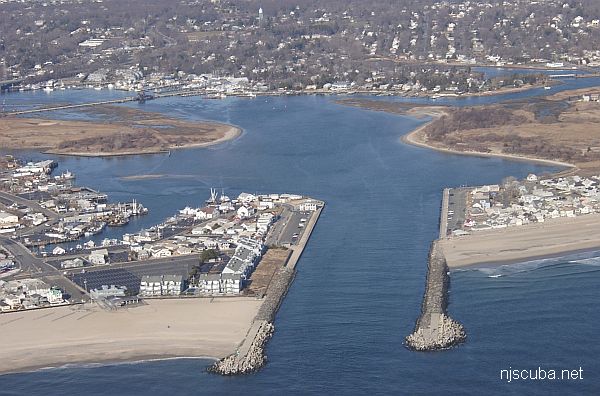
Point Pleasant on the left /south
Manasquan on the right / north
- Type:
- tidal river inlet with stone jetties or bulkheads on both sides
- Depth:
- 30 ft
This inlet has a long slightly L-shaped jetty on the north side and a longer straight jetty on the south side. Both jetties are made of large stones and concrete, and the ends are built out of man-made concrete "jacks", shaped like an H with a 90-degree twist in the middle.
Both sides have an easy climb up or down the rocks where the bulkhead meets the jetty, however, the jetties themselves are steep and tall, and would probably be impossible to climb in full scuba. An alternative is to swim around the point and come up on the beach, but it is a very long swim, and I would recommend against it unless you are a very strong swimmer. If you think about the restrictions above, you'll realize that it is completely illegal to cross from one side of the river to the other. Boat traffic in this inlet can be extremely heavy.
The "jacks" at the end of each jetty are extremely dangerous in a surge, and confusing to navigate around. Several people have died when waves pinned them into the large pockets between the jacks at this point. Avoid this area unless you are very experienced in this sort of diving, and the sea is absolutely calm.
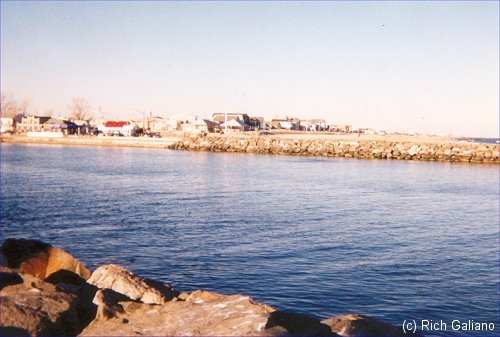
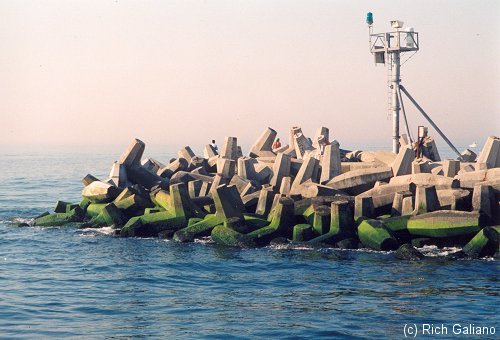
The only times I ever dove this river, the visibility was terrible, literally zero near the end of the north jetty. The bottom is exactly the same as at the Railroad Bridge, with more sandy areas farther away from the jetties. There were huge spider crabs, big fluke in the sand, and eels, but along the whole length of the jetty, I saw not one lobster. ( Other people tell me there are many on the south side of the inlet. ) the area under the fishing bulkhead is supposed to be a treasure trove of lost articles, but there are almost always fishermen there.
Parking is free in Manasquan on the north side, metered in Point Pleasant on the south, and can be hard to find close by on both sides. On the north side, there are also showers by the beach and a food stand.

Tip: if conditions here turn out to be too rough for diving from the south side, you may still be able to dive the nearby Railroad Bridge, where the tide is about 10 minutes later. This is not true for the north side, since the north and south sides of the inlet are several miles apart by road.
All in all, I recommend the Shark River inlet over this one, especially for less experienced divers. However, I am told that conditions here can be a lot better, and I have seen pictures to prove it, so I'm not writing this one off yet.
Restrictions:
- No time limits posted.
- Diving permitted only within 50 ft of jetties.
- Diving not permitted west of Ocean Ave / First Ave. Flag required.
- Spear fishing is illegal on the north (Manasquan) side of the inlet.
- Point Pleasant ( south Side ) has strong ( and kooky ) laws against disrobing in public, including wetsuits, although they are not usually enforced.
These restrictions are clearly posted on both sides of the inlet; also see Regulations.
Since this is a tidal river, you must dive at slack water. If you've never dived a local river or inlet before, you may want to look at the page on Local Diving Conditions.

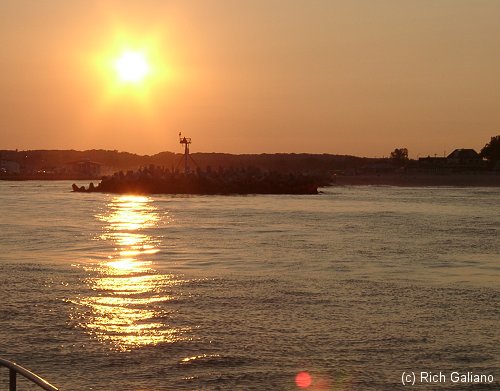

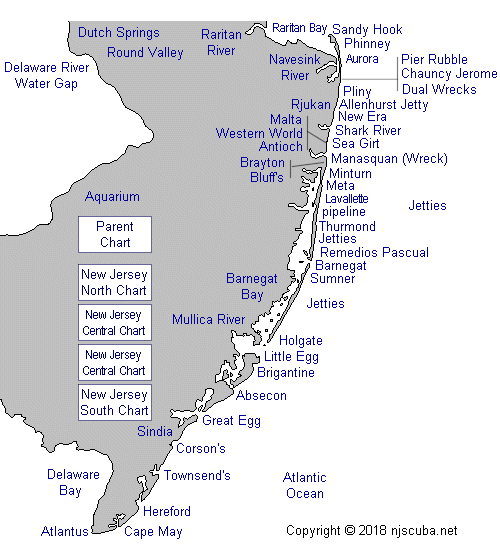
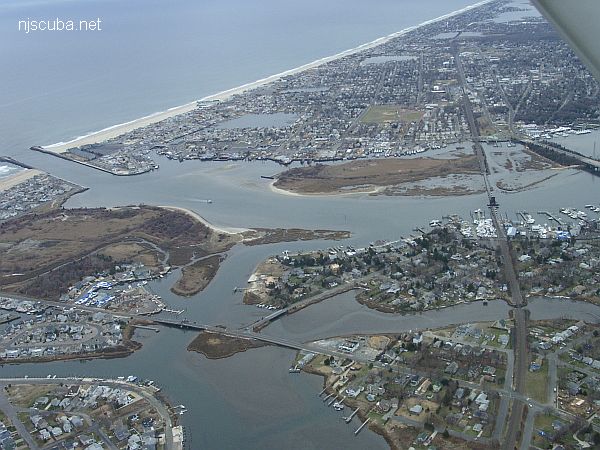
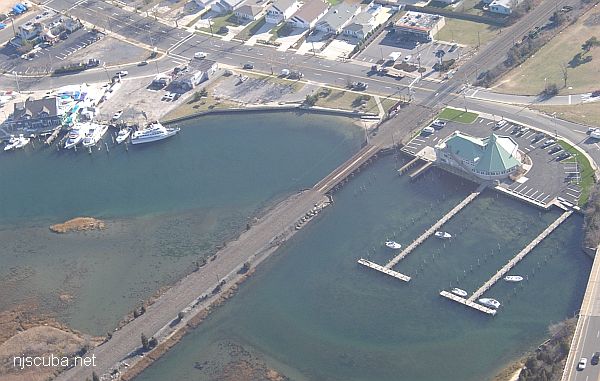
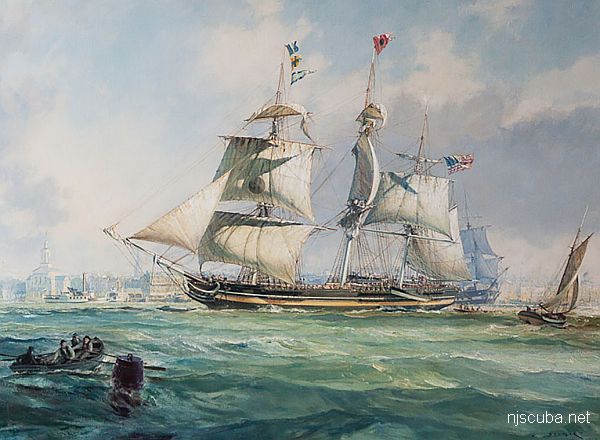
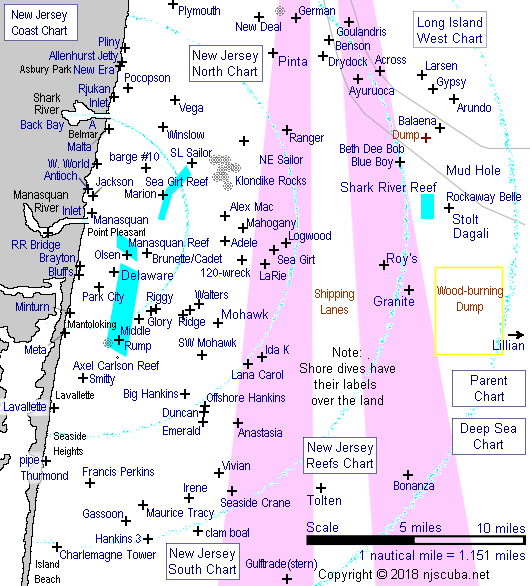
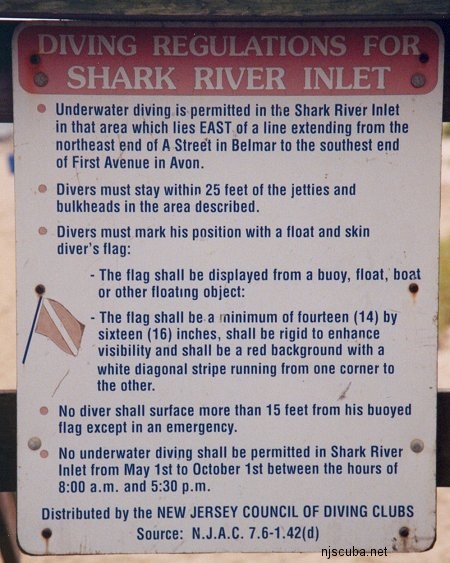
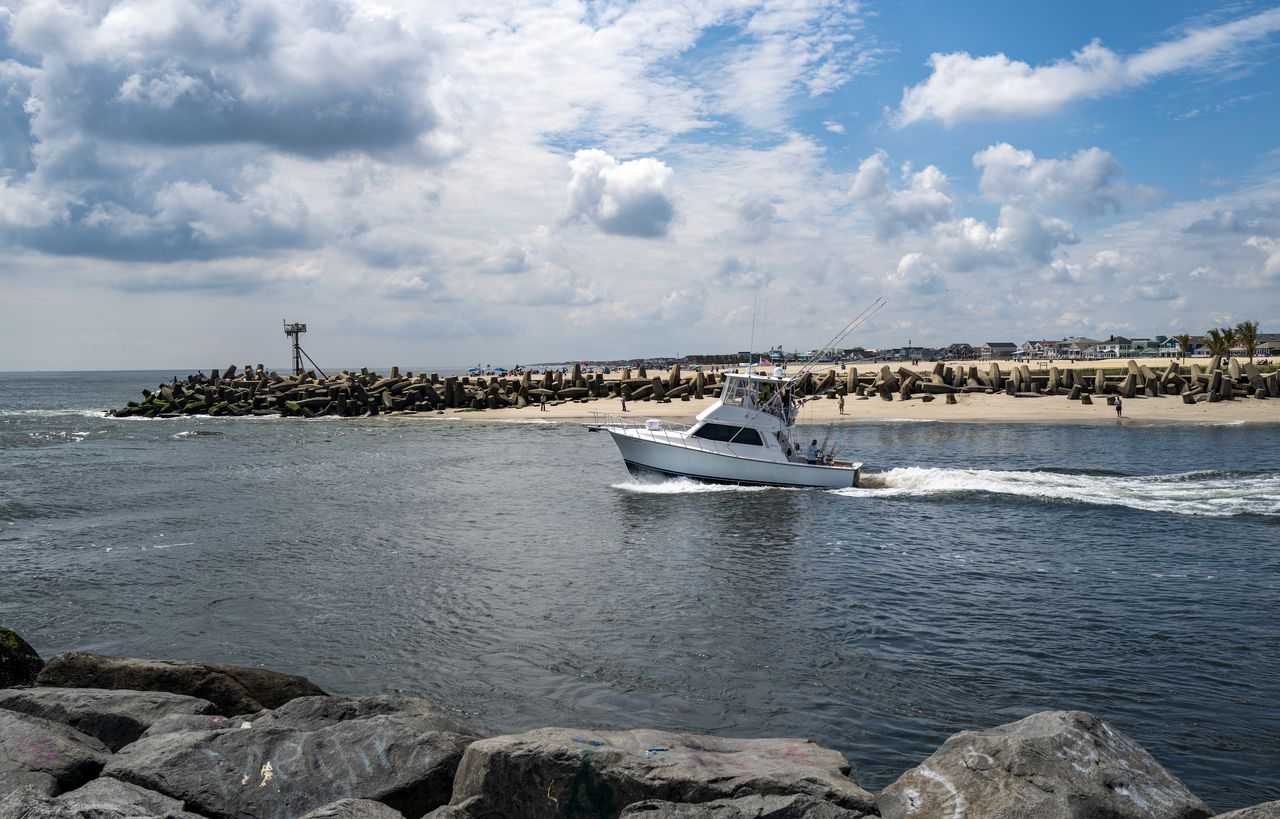
Questions or Inquiries?
Just want to say Hello? Sign the .